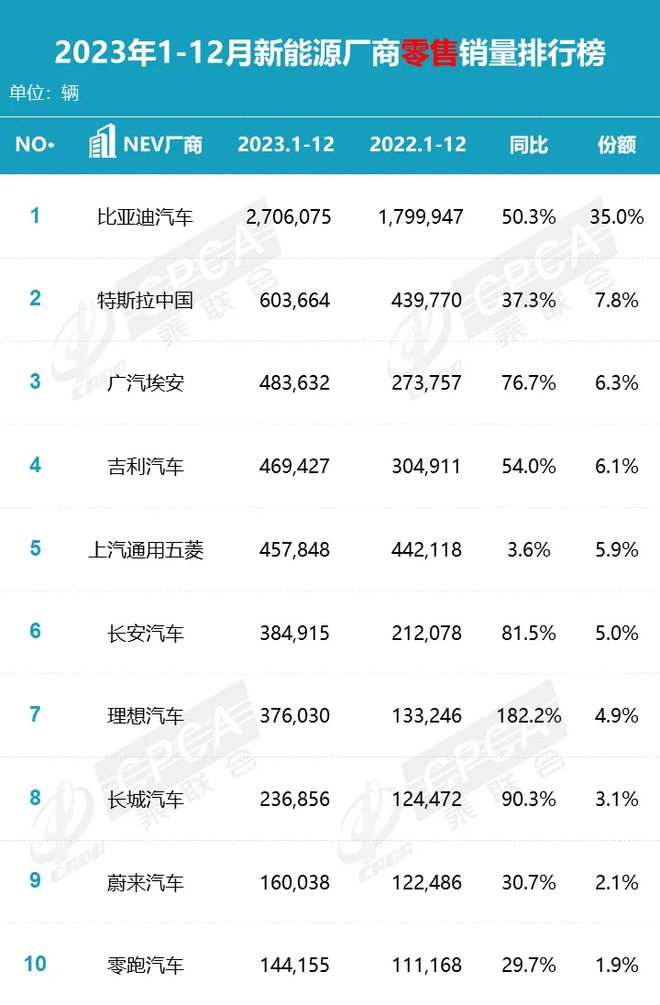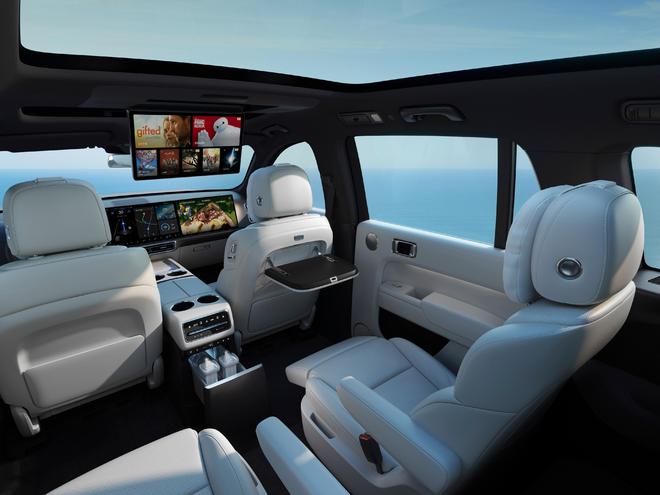Chinese Car Brands Dominate the Domestic Market: Are Joint Venture New Energy Vehicles No Longer Competitive?
As 2024 begins, the Chinese automotive market has seen domestic car groups eagerly reporting sales figures, with a unified focus on new energy vehicles (NEVs) as the critical battleground. According to the latest data from the China Passenger Car Association, in 2023, with a total of 30 million vehicles sold, Chinese brand cars captured 52% of the annual retail market share, an increase of 4.6 percentage points from the previous year. For the first time, their overall sales volume surpassed that of joint venture brands, shining brightly due to their advantage in NEV models.

In the past year, the production and sales of NEVs reached 9.587 million and 9.495 million units, respectively, marking year-on-year increases of 35.8% and 37.9%. Their market share hit 31.6%, with Chinese brands playing a significant role, firmly securing 9 out of the top 10 spots in the NEV retail sales rankings. These solid production and sales figures not only propel the Chinese automotive manufacturing industry to new heights but also raise a significant question: faced with the formidable rise of Chinese brand NEVs, are joint venture NEVs truly falling behind?
- Chinese Brand NEVs Continue to Emerge
2023 was indeed a breakout year for NEVs, with Chinese domestic brands launching 94 new NEV models, 13 times more than their joint venture counterparts. This underscores the dominant rise of Chinese brands in the NEV sector. Of these new models, 53 were pure electric vehicles, accounting for more than half of the total. Plug-in hybrid models followed with 31 new launches, and there were 10 new extended-range models.

This surge of new models not only broadened consumer choices but also highlighted the comprehensive strategy and strong capabilities of Chinese brands in the NEV technology field.
In contrast, joint venture brands only introduced 7 new NEV models in 2023, including 5 pure electric and 2 plug-in hybrid models, with no new extended-range vehicles. Clearly, in the NEV field, joint ventures are comprehensively lagging, with their innovation significantly trailing behind Chinese brands.
- Rising Product Strength of Chinese Vehicles
Over the past decade, Chinese brand NEVs have not only improved in performance and range but have also laid a solid foundation in luxury and intelligence, achieving breakthroughs in underlying architecture and hardware/software configurations. The bottlenecks that once constrained the development of Chinese brand cars have become history with the rapid development of NEVs.
Luxury features once exclusive to high-end cars have become more accessible, with advanced technology like refrigerators, large sofas, air suspension, and lidar becoming available in vehicles priced around 200,000 yuan. Especially in terms of intelligence, the rapid development of Chinese automakers and their user-friendly local settings have provided Chinese consumers with the most technologically advanced driving experience.
Thus, through independent research and development, Chinese brands have gained pricing power and unprecedented market influence, no longer trailing behind joint venture brands.
- Joint Venture Brands Are Still Making Efforts
Objectively, the transformation of joint venture automakers is challenging, mainly due to the shift from old to new business models. This is evident in the transformation paths of companies like Volkswagen, General Motors, and Toyota.
Traditional automakers usually invest heavily in platform development before launching new models. This approach, often described as “building the stage before performing the play,” is hindered by numerous suppliers, large workforces, and decades-old organizational structures, making transformation a long-term process.
In contrast, new Chinese automakers have no such concerns and adopt rapid capital strategies to enter the market, creating hit models to ignite market interest, establishing brand recognition, and fostering continuous development.
Despite the difficulty in turning around a large ship, the efforts of joint venture brands in recent years cannot be overlooked. For instance, in the second half of 2023, Volkswagen AG in China initiated a “price reduction mode.” SAIC Volkswagen’s ID.3 led with a price cut of 43,000 yuan, followed by significant discounts across FAW-Volkswagen’s ID family, with benefits ranging from 38,000 to 87,000 yuan, including up to 7,000 yuan in trade-in bonuses. These actions indicate that joint venture brands are gradually focusing on the NEV market and actively participating in price competition.
- Increasing Localization Collaboration
Of course, price reduction is just one market strategy. For a real turnaround, improving product competitiveness is key. The acceleration of China’s NEV process has caused traditionally minded and product-conservative joint venture enterprises to struggle, especially evident in the user experience of intelligent cockpits. Compared to the intuitive and fully controllable features of Chinese brands, joint venture models often offer simplistic functions, failing to respond appropriately or even remain silent, highlighting the need for deeper localization and adaptation to thrive in the evolving market.